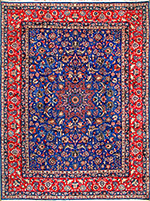Textiles Studies

Textile Research Works
Date of this Version
1994
Document Type
Article
Citation
Exhibition, The Textile Museum, 1994
Abstract
With successive conquests of the highlands beyond the Great Wall, the Manchu rulers of the Qing dynasty (1644 - 1911) formed what was to become China's last empire. Their political expansion encompassed Han Chinese, Mongolians, Turks, Tibetans, and other peoples with diverse ethnic origins, languages and religious beliefs, whose regional economies often relied upon physical features of the land.
Within the Great Wall, to the east and south, silk and sericulture had a long history. Silkworms and mulberry trees thrived in the low-lying agricultural regions populated by Han Chinese. From inland regions rivers flowed to the sea, where coastal cities flourished as centers of silk manufacture and trade.
Beyond the Great Wall, to the west and north, wool was produced by nomadic peoples whose lives depended on animal husbandry and the herding of sheep in upland pastures. Cotton was cultivated in areas of sparse rain, relying on intensive irrigation. Together, cotton and wool were made into rugs in oasis towns that lay at the edge of the desert.
Rugs and Textiles of Late Imperial China explores textile arts of the Qing Empire that reflect both cultural diversity and vast imperial domain.
Included in
Art and Materials Conservation Commons, Art Practice Commons, Fiber, Textile, and Weaving Arts Commons, Indigenous Studies Commons, Museum Studies Commons


Comments
© 1994, The Textile Museum